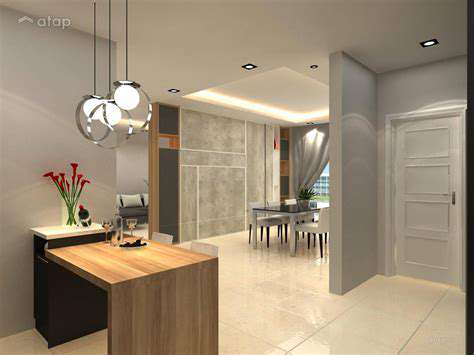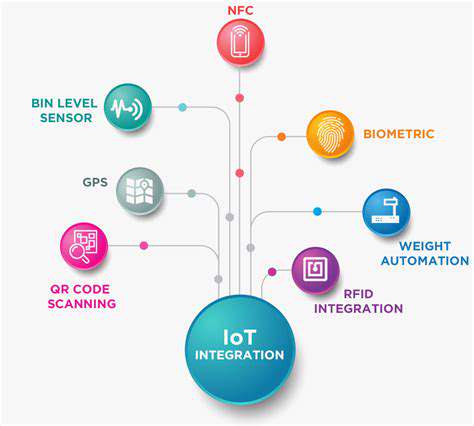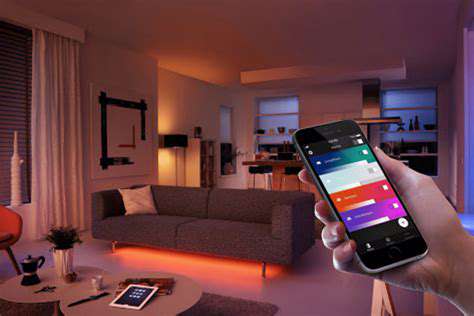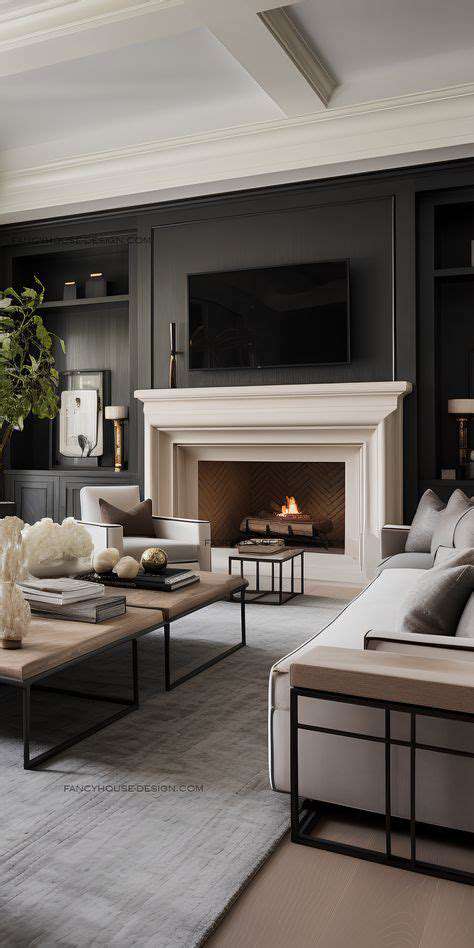Best Practices for Smart Lighting in Home Renovations
Defining Your Smart Lighting Needs
Understanding Your Lighting Goals
Before diving into smart lighting, take time to reflect on your specific lighting requirements. Are you prioritizing energy savings, mood enhancement, security features, or a blend of these elements? Clarifying your objectives will steer your purchasing decisions toward solutions that genuinely align with your lifestyle. Walk through each room of your home, noting how you use the space - whether for focused tasks, relaxation, or entertaining guests. This room-by-room analysis prevents overspending while ensuring every light serves a purpose.
A thoughtful lighting plan forms the backbone of any effective smart lighting setup. Identify which areas need dimmable options, color-changing capabilities, or automated routines. Should lights activate when you enter a room? Would voice control through existing smart speakers simplify your life? Addressing these questions upfront creates a lighting system that works intuitively with your daily rhythms.
Assessing Your Budget
The smart lighting market offers solutions across all price ranges. You'll find everything from budget-friendly individual bulbs to premium whole-home systems with cutting-edge features. When calculating costs, remember to include not just product prices but also potential installation fees and long-term maintenance. That seemingly expensive smart switch might save you hundreds in energy bills over five years. Always weigh upfront costs against projected lifetime value.
Energy efficiency deserves special attention during budget planning. Modern smart LEDs consume significantly less power than traditional bulbs while offering superior longevity. Many homeowners recoup their initial investment within 18-24 months through electricity savings alone. Create a spreadsheet comparing different products' energy ratings and estimated operational costs to make the most informed decision.
Choosing the Right Smart Lighting Technology
Today's smart lighting comes in three primary formats, each with distinct advantages. Smart bulbs screw into existing fixtures but require constant power. Smart switches replace traditional wall controls but need proper wiring. Complete systems offer centralized control but demand greater initial setup. The right choice depends on your technical comfort level and desired features. Also verify that your preferred option works with your home's electrical infrastructure and any existing smart home platforms.
Evaluating Compatibility and Integration
Nothing frustrates more than bringing home smart lights that won't connect to your router or voice assistant. Before purchasing, confirm that products support your preferred ecosystem - whether Apple HomeKit, Google Home, Amazon Alexa, or others. Check manufacturer websites for compatibility lists and read recent customer reviews mentioning integration experiences. If you plan to expand your smart home later, ensure the lighting system can accommodate future additions like sensors or additional zones.
Considering Design Aesthetics and Style
Smart lighting should enhance your home's visual appeal, not detract from it. The right fixtures become subtle design elements that disappear until needed, while poorly chosen options can clash with your decor. For visible fixtures, consider finish colors that complement your existing hardware. Pay attention to bulb shapes and sizes, especially in open fixtures where the bulb remains visible. In minimalist spaces, you might prefer discreet recessed lighting with smart capabilities over prominent smart bulbs.
Understanding Installation and Maintenance Requirements
Installation complexity varies dramatically between products. Some smart bulbs simply screw in like traditional bulbs, while whole-home systems may require professional electrical work. Be honest about your DIY capabilities - improper installation can create safety hazards. For maintenance, consider how often the system requires software updates and whether those updates happen automatically. Some systems alert you when bulbs need replacement, while others leave you guessing. These practical considerations often determine long-term satisfaction more than flashy features.
Planning for Seamless Integration and Control
Laying the Foundation for Integration
Successful smart lighting begins with comprehensive preparation. Start by evaluating your home's electrical capacity - older homes might need circuit upgrades to support extensive smart lighting. Document all existing light switches and fixtures, noting which circuits control which areas. This mapping prevents headaches during installation and helps identify potential compatibility issues early. If planning future expansions, choose a system with ample capacity for additional devices without requiring complete overhauls.
Platform selection requires careful comparison. Beyond basic features, examine each system's update history - regularly updated platforms tend to have longer lifespans. Consider whether the manufacturer offers local control options (important if internet service fails) and how the system handles multiple users. These often-overlooked factors determine whether a system remains useful for years or becomes obsolete quickly.
Defining Control Strategies and Scenarios
The true magic of smart lighting emerges when lights respond automatically to your life patterns. Start by identifying daily routines that could benefit from automation - perhaps gradually brightening lights as your morning alarm sounds, or automatically dimming when you start watching TV. Many systems support geofencing, turning lights on as you approach home. For security, program random lighting patterns when traveling to simulate occupancy.
Advanced integrations multiply convenience. Connect outdoor lighting to weather forecasts so pathway lights brighten during rainstorms. Sync dining room lights with your smart oven to gradually dim as dinner finishes cooking. These thoughtful touches transform smart lighting from a novelty into an indispensable home feature. Create different scene presets for common activities like reading, entertaining, or movie nights.
Ensuring Seamless Control and Monitoring
After installation, establish maintenance routines to keep your system running smoothly. Schedule monthly checks of all automated routines to ensure they still match your lifestyle. Monitor energy usage reports to identify any unexpected spikes that might indicate malfunctioning devices. Regular firmware updates are crucial for security and performance - enable automatic updates when possible. For households with multiple users, ensure everyone understands basic troubleshooting steps to avoid frustration.
Centralized control hubs simplify management, especially in larger homes. Many homeowners find wall-mounted tablets or voice control most convenient for daily adjustments. Consider creating simple printed guides for guests or less tech-savvy household members explaining how to control lights without disrupting your automations. Remote access allows checking on lights while away, but ensure your system has proper security measures to prevent unauthorized access.












